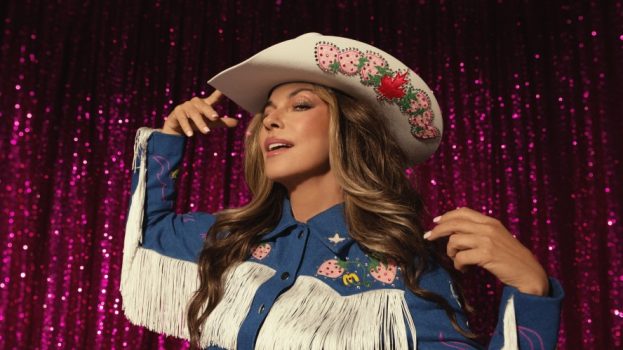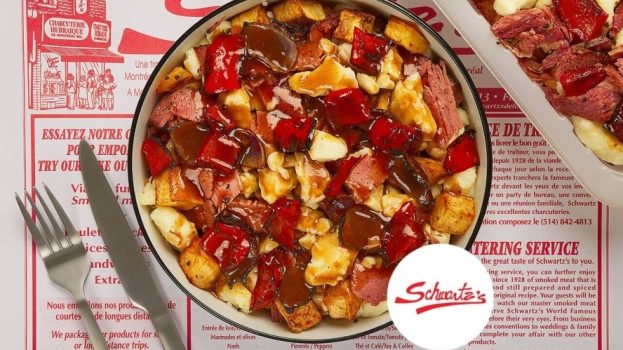
TikTok says more creators are building their brands with business ventures outside of creating content.
This story was originally published in the 2024 Winter issue of strategy magazine
Roxy Earle confidently walked onto the social scene in strappy heels after she was cast as one of the Real Housewives of Toronto (RHOT) back in 2017. Her influence grew as her popularity on the show soared, and soon enough, she had her own lifestyle brand called Luxurious Roxy, empowering women through body positive messaging. “It wasn’t some big strategic plan to start a brand,” she explains, “it was just that no one understood or was serving my needs. I had a hard time shopping and finding clothes that fit me. And so I thought, I’ll fill that gap in the market. And if I fill it for myself, then other people will be interested in it too.”
A year after her debut on the RHOT reality show, Earle entered a partnership with retailer Le Château to design a fashion line and serve as creative director. Next, she collaborated on an inclusive swimwear line for Knix and several capsule collections for Joe Fresh. Today, she’s building a women’s health app, called Ana, that’s focused on menstrual cycle tracking and healthy mindset practices. The app is in beta mode, but the next iteration will centre on fertility. “And then, my business partner, Joanna Griffiths of Knix, and I have a fashion styling and shopping app coming out. But that’s all I’m going to say about that.”

Roxy Earle collaborates with Joe Fresh on a clothing line.
Earle is part of a movement of content creators and influencers diversifying their brands, finding new revenue, taking agency of their position in a competitive market and (more importantly to marketers) becoming selective when it comes to which brands to partner with – and how.
Social media is right up there with smartphones and audio and video streaming as one of the most impactful creations of the century. But while the market value of influencer marketing, according to Statista, has ballooned to a whopping USD $21.1 billion this year (more than tripling since 2019), the downside is that the creator economy has become overly saturated. “[As a consumer], I’m fatigued by how much is out there,” Earle says. “I’m fatigued by all the content and all the ads and everyone’s coming at me every day telling me what I need to buy, how I need to look, what I need to do, how I need to parent, what I need to eat. It’s like we hit gold, and then every single corner I turn somebody is hawking gold jewelry at me.”
As for influencers, they’re experiencing burnout as a result of the increased competition, says global creative and social agency We Are Social in a recent report. To remedy this, some content creators are diversifying their revenue and creative output through things like podcasts and product launches. This growing entrepreneurial edge is leading to influencers wanting to take more control, which in turn is affecting how they work with brands.
“I’m seeing a big shift from transactional to collaborative strategic partnerships [between brands and influencers]. It’s very hard to stand out anymore with the algorithms and the plethora of content that’s out there – it becomes really critical to align [your brand] with someone who has really built a community with their audience,” says Emma Ferrara, chief business development officer at Viral Nation, a global digital and social agency. “There is a growing emphasis on [brands] bringing creators closer to the fold, collaborating on launches, having them more at the forefront of the table when it comes to creative ideation.”

Endy says its seeing a shift in brands giving creators more creative freedom, which leads to authentic content.
Christina Sfeir, director of PR and strategic communications at Endy – a Canadian online mattress company that usually works with nano and micro influencers – agrees that creators need more creative freedom if marketers are to build a rapport and capture their audience’s attention.
“We scaled back a little bit to leave creativity in the hands of the creators because they’re going to know what works best on their platform. We want things to perform well and they know how that’s going to happen,” Sfeir says.
At any given time, Endy works with 15 to 30 influencers and maintains a relationship with each for about six months. “We also do our best to continue those relationships, making sure that they feel like a community with our brand – we update them on new products, we invite them to our store events. Influencers should have always been considered partners from the beginning,” she goes on. “That shift in power and trust has been really important, and influencers and brands need to recognize it and adapt.”
Talent agencies are also seeing this shift in real-time among their clients. “Influencers are creating brands around them, and for the ones we represent, we’re supporting them in that journey – we help them monetize the content, we’re developing ventures around them,” says Ferrara.
For instance, one of Viral Nation’s influencer clients, Yuri Lamasbella – who gained 2.4 million followers on Instagram and 4.3 million on TikTok after she began posting videos mimicking the Kardashians during the pandemic – crossed a significant threshold, having launched a tracksuit line. And so far, the influencer has seen revenue in the six figures.

Influencers like Yuri Lamasbella are diversifying their brands with merch.
“You’re going to see a lot more creators being their own brands and bringing to life their own products,” says Sofia Hernandez, global head of business marketing at TikTok. “What’s happening, is [that brands have] shifted from this place of handing a script and a cheque to influencers or creators to a place of really significant authenticity. I work with brands and creators all over the world, and what I’m hearing regularly is that creators have never been truer to what they stand for. There are creators that are turning down $100,000 contracts because what the brand is asking them to do or say does not fit with who they are.”
To marketers, Earle suggests building trust going forward. “A brand will come to me and be like, ‘We really love Roxy. We love her style. We love what she stands for. And here are the 300 guidelines we’d like her to create great content within.’ By the end of it, I put something out that doesn’t even feel like me anymore. And authenticity is what you’re really paying for. So don’t spend the big bucks bringing in the people that you think can move the needle on your marketing plan and then handcuff them.”
Whether it’s the popularity of Logan Paul and KSI’s Prime energy drink this year or Kat and Latisha Clark – TikTok’s top creators of 2023 – launching a successful podcast Basically Besties, influencers are putting their entrepreneurial skills to use. “And the opportunity that exists for brands is to offer more instances where the community can create with you. It’s scary for brands, less scary for creators. But it’s something we’re starting to see in the brand space,” says Hernandez.
“When we first started, we got called bloggers and we didn’t have blogs,” Earle jokes. “We have influence, and understand that we are a business. I’m not just a collaborator with Joe Fresh, I’m designing my collection. It’s no longer that the brand knows more than us. We need the brands, but they need us too.”






















